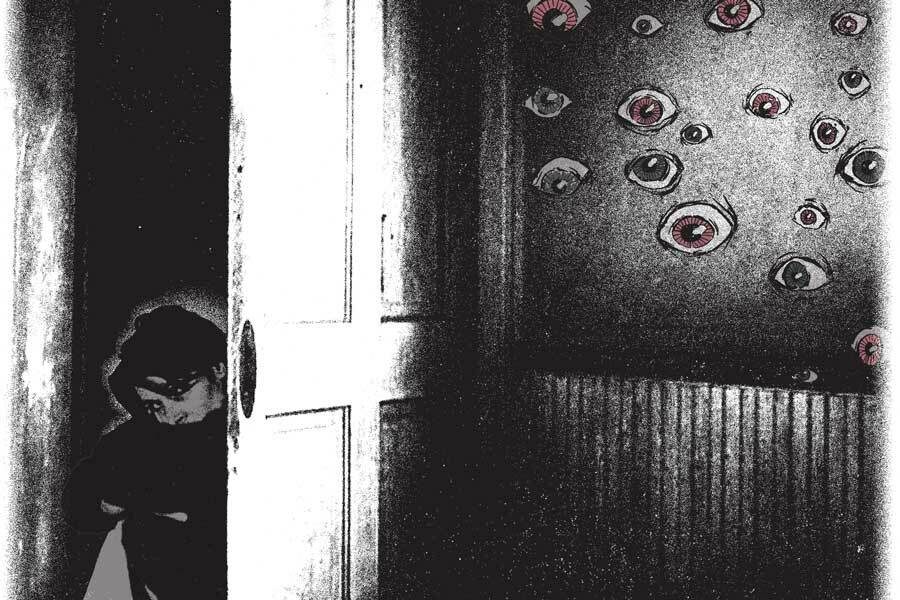As a Domestic Violence Survivor, I Don’t Always Feel Safer at Home
Shelter in place orders can remind those of us with C-PTSD of past times we were trapped.
Anna Joy Springer

In an attempt to rein in the spread of the deadly new coronavirus, many state leaders have asked residents to self-isolate or shelter in place. In California, Los Angeles County officials have called this order “safer at home.” Reducing person-to-person contact will certainly improve overall public health in the face of COVID-19. Those of us who have experienced domestic abuse, however, may not feel safer at home — even if our abusers are long gone.
Domestic abuse — including intimate partner violence, child maltreatment and elder or dependent abuse — harms or kills millions of Americans. More than 10 million adults are physically hurt by an intimate partner each year. These numbers don’t include the many other forms of domestic and intimate violence. In 2017, state agencies determined that about 674,000 children were victims of maltreatment warranting intervention. People exposed to ongoing abuse frequently develop a chronic medical condition known as complex post-traumatic stress disorder (C-PTSD), which can cause outsized feelings of fear and anxiety, among other distressing symptoms, for decades.
Many of us who have experienced past abuse are now able to “shelter in place” without facing immediate threats of physical or ongoing emotional harm. But staying in the house with others can remind those of us with C-PTSD of past times we were trapped. It can be a challenge to untangle current feelings of fear, sadness and anger from historical ones.
I grew up very scared in my house. All my adult guardians, including my mother, father and stepfather, were under-resourced financially, culturally and psychologically. They were frustrated and exhausted people who compulsively and sometimes brutally transferred their extreme discomfort onto me. I learned to live in unpredictability, facing frequent domestic violence, including ongoing, unpredictable emotional abuse. I knew I had to stay out of the way, but there was nowhere in the house that was “mine,” because adults were the owners and made the rules. I came to think of my house as a cage.
One of the earliest ways I created more predictable circumstances was to be awake when everyone else was asleep. Another way I coped was to lose myself in watching TV and eating. I felt safest when I was alone, or when everyone’s eyes were closed. But this also made me feel so unprotected sometimes, because I knew I couldn’t provide for or defend myself well. Later, trying to escape while still staying alive, I disappeared into work, relationships and substances.
Eventually, I found more effective ways to address trauma. Therapy, bodywork, 12-step groups, yoga, pharmaceuticals, art and meditation have shown me how to prioritize being engaged, responsive and well. Even so, I still sometimes need to remind myself of the simple truth: “I have a chronic condition that makes me feel scared sometimes, even when I don’t know exactly why.”
It took a few days of sheltering in place with my very kind and nurturing girlfriend to notice that childhood wire had been tripped. I worried that my school papers and clothes were disrupting my girlfriend’s calm home life, that my dogs were annoying and that I was drinking too much of her coffee. Without quite knowing it, I wanted reassurance that I wasn’t disgusting, super selfish, in the way, and all the other self-shaming beliefs I developed as a kid.
Before those of us with scary home histories can bring ourselves to do things that remind us we are not in danger right now, we may have to melt down a little first. We might find ourselves on a two-hour walk or sitting in a closet biting the hem of a coat.
Meltdowns are a good indicator that part of our nervous system is trying to determine the fastest instinctual response to threat. For many people with C-PTSD, our system has become so profoundly vigilant that it sends out the same signals in low-threat situations as it would if we were truly in peril. We might begin breathing shallowly, getting slightly dizzy and going blank. Frustration and rage may flood in. Some of us will need to gain new skills to avoid acting out in ways that will hurt ourselves or others, will cause lasting damage, or will scare anyone nearby, especially kids.
Those of us who have lots of experience with calming our hair-trigger nerves might be able to help guide some of the other people who have less experience doing so. Over the past 25 years of recovery and mindfulness practice, I have learned ways to try and soothe myself and can share some basic tricks.
Sometimes saying simple words about what is happening right at the moment — such as, “I am wearing bright orange socks” — can bring me back into the present. Formal mindfulness techniques like sitting still and noticing the sensations of the breath in the nostrils, chest or belly can also be effective.
What works best for me is directing my attention to non-language-based sense stimulus, which is possible to do during the regular course of the day, even when others are around.
A simple method is to feel the points at which parts of your body meet a surface and, in your head, to describe what you feel. No one will know you are directing most of your attention to the exact sensations of your pinkie toe against the rug or your sweatshirt on your shoulder. Does that coffee mug feel warm or cool in your hand? Rough or smooth? Soft or hard? Where is it touching the skin of your hand, and where is it not? Try to walk slowly to another room, feeling each part of your foot touch down. Put a raisin or a round pebble in your mouth and carefully explore it with your tongue. Smell your spices and experience the nuances of scent. Or play some nonthreatening music and listen deeply while you breathe.
Humming, singing and swaying calms part of the nervous system on a deep physiological level, so rock out. It also helps to hold a furry pet, especially if that pet purrs.
If you’re able to, you might let a loved one in the house help you. Ask them to hold you the way you like to be held or to stroke you in a way that feels nice. Some may even be able to notice when you’re holding your breath and remind you to exhale. It can be weird to ask for and receive care like this, but it can really work.
As you discover things that bring you into a sense of embodied, conscious presence, you and your loved ones might consider working with a specialist who can help everyone practice seeking and offering support.
It’s not always easy, even for those of us who have had years of practice. Sometimes, when I’m alarmed, I still compulsively grab a handful of snacks and turn to the news or the gossip stream again. I can’t always be my own perfect parent, or stop myself from doing things that make me feel worse for a while. This escape instinct may be a form of harm reduction. It is not at all a failure.
I’ve come to see every time I’m able to make a conscious choice about effective self-care as literal magic. When I’m able to focus on my breath or the poodle or a sound, when I’m able to be in the house with my girlfriend for two straight weeks without fleeing, it’s a total ticker-tape-parade miracle! A miracle, a miracle!
Fortunately, I have come to know a lot of other people with similar backgrounds, and we meet regularly — now virtually — to remind each other what we’re up against, face challenges and cheer each other on. Thankfully, it’s not a super common experience to have learned that home is the scariest place, but it’s common enough that there are free support groups around the world. During this stay-at-home period, online groups are available around the clock.
Nearly everyone is feeling an amplified sense of fear right now. For those of us with histories of domestic trauma, staying in a shared home can feel unsafe, which can in turn cause emotional dysregulation. If you ever lived in a home where you were scared and felt trapped, and you now find yourself panicky, dissociative or extra-snappy, there are effective ways to soothe yourself. Support is available if and when you need it.
RESOURCES FOR THOSE FEELING UNSAFE AT HOME
Al-Anon Family Groups
A recovery program for friends and family of alcoholics
» al-anon.org
Adult Children of Alcoholics
A recovery program for adults who grew up in abusive homes
» adultchildren.org
Buddhist Recovery Network
A Buddhist approach to recovery, open to all backgrounds
» buddhistrecovery.org
Arielle Schwartz, Ph.D.
Blog from the creator of the Complex PTSD Workbook
» drarielleschwartz.com
Mindfulness and Trauma
Resources and background on mindfulness-based stress reduction
» trauma-recovery.ca/recovery/mindfulness





